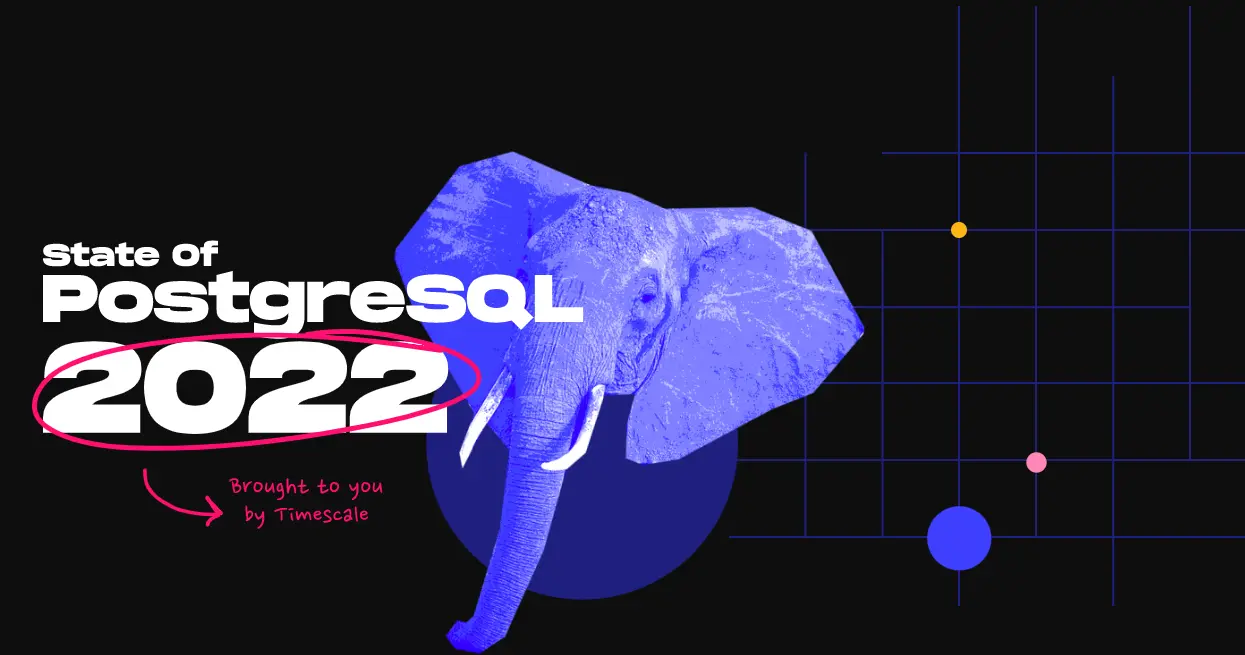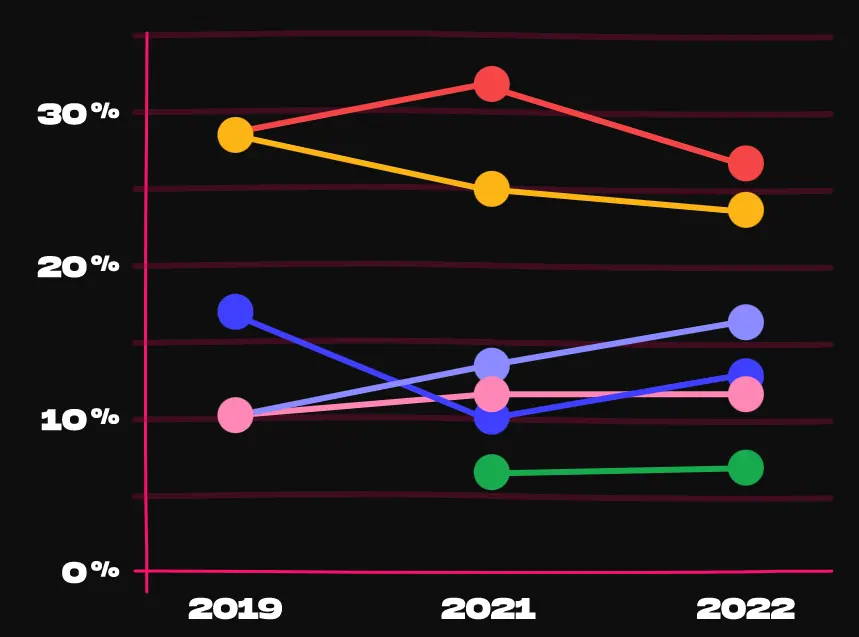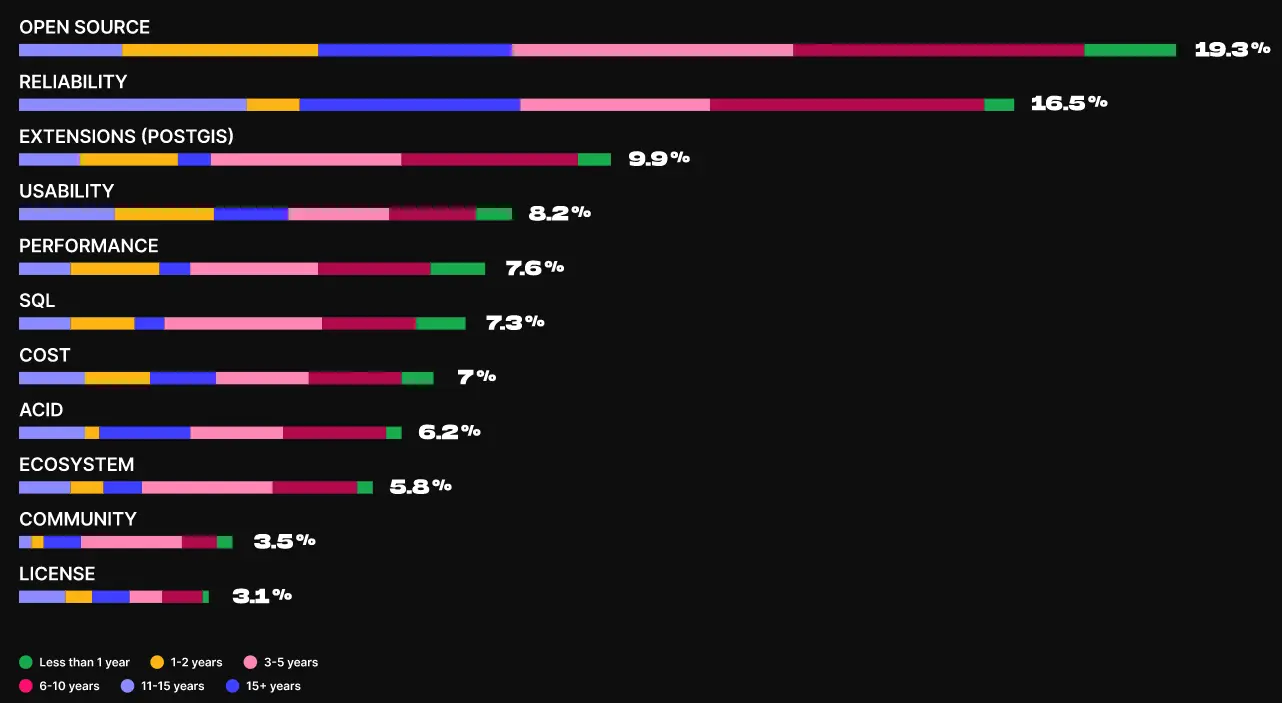Timescale has released a new State of PostgreSQL Survey 2022, which ran from June 6 to June 30, 2022. The survey, which ran from June 6 to June 30, 2022, received 992 responses from developers around the world, and the State of PostgreSQL Survey provides some key insights into PostgreSQL functionality and the broader PostgreSQL community.
The first version of the report released in 2019 collected feedback from more than 500 developers, and the second version of the report in 2021 also sampled nearly 500 participants. Based on the results of both years, respondents from EMEA (Europe, Middle East, and Africa) represent about half of all respondents, followed by North America at 25.9%.
In addition to sending the survey to past participants, Timescale also promoted it on social media, email newsletters (their own and 3rd party), TimescaleDB and PostgreSQL Slack channels, PostgreSQL mailing lists, Reddit and Hacker News. Compared to the previous two surveys, the number of participants increased this year. Key findings of the report include why respondents use PostgreSQL, how they contribute to the community, adoption in various organizations, and favorite tools and extensions.

“By organizing and publishing PostgreSQL status reports, we help developers and developer-centric companies and communities better understand what’s happening with Postgres: how it’s all changing, the different types of Postgres users, the types of use cases they’re working on, the places they’ve been to share and learn, the and the opportunities for improvement across the Postgres community, which also gives us the opportunity to give back to the broader PostgreSQL community, which we are proud to be a part of and has been very helpful to us.”
Some of the highlights of the report are listed below.
-
DB engines data indicates that PostgreSQL is becoming increasingly popular. The number of new PostgreSQL users trying the database for less than a year has grown from 6.1% in 2021 to 6.4% in 2022.

-
Open source is the number one reason the public chooses PostgreSQL (19.3%), followed by reliability (16.5%) and scalability (9.9%). The report notes that the reasons for choosing PostgreSQL change with experience. For those who have used PostgreSQL for less than 5 years, open source is the most important factor in choosing PostgreSQL; for those who have used PostgreSQL for 6-10 years, both reliability and open source are important; and those who have used PostgreSQL for 11-15 years choose PostgreSQL mainly because of its reliability.

-
44% of PostgreSQL users with 15+ years of experience have contributed to PostgreSQL at least once. “In fact, regardless of their experience, all users contribute to the PostgreSQL community.”
-
55% of respondents say they are using PostgreSQL more today than they were a year ago.
-
More than 3/4 of respondents said they use PostgreSQL for personal projects, 95% use PostgreSQL at work, and 74% use PostgreSQL for personal and professional projects.
-
The majority of respondents (76.2%) said that technical documentation is their preferred method of learning PostgreSQL, followed by long blog posts (51.5%) and short blog posts (43.3%). Respondents with less than 5 years of PostgreSQL experience prefer videos to blog posts.
-
In terms of community interaction, over 20% of respondents said that mailing lists are one of the ways they keep in touch with the community, although some respondents mentioned difficulties in using PostgreSQL mailing lists as the primary way to interact with the core team and the project as a whole. Some other channels of engagement include Slack (10%), Stack Overflow (8%), blogs (8%), Twitter (6%), and Reddit (6%).
-
Respondents also shared some of their favorite PostgreSQL extensions. In order of ranking, the top ones are
- PostGIS
- TimescaleDB
- pg_stat_statements
- pgcrypto
- pg_trgm
- Citus
- uuid-ossp
-
SQL, Python, Java, shell scripting, and JavaScript / TypeScript are listed as the most common languages used to access PostgreSQL. PostgreSQL users with 0-5 years of experience are more likely to use JavaScript or TypeScript than Java; users with 6+ years of experience are more likely to use shell scripts to access the database.
-
psql (69.4%), pgAdmin (35.3%), and DBeaver (26.2%) were the top three choices among respondents who use tools to connect to PostgreSQL for query and administrative tasks.
-
Grafana, pgAdmin, and DBeaver are the most likely visualization tools to be used.
-
Fewer respondents said they would manage a PostgreSQL database on their own than in 2019 and 2021. It appears that PostgreSQL users are starting to increasingly use DBaaS providers to deploy PostgreSQL. 44% of those deploying PostgreSQL as a Kubernetes container use Helm, 16% use Crunchy Operator, and 7% use Zalando Operator.
More details are available at view full report.